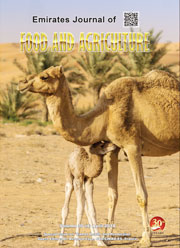The leavening Ability of many lactic acid bacteria Isolated from Spontaneous Sourdough
DOI:
https://doi.org/10.9755/ejfa.2023.v35.i1.2990Abstract
Sourdough technology has been used to make bread for thousands of years. While simple, it involves complex interactions that determine
microbial communities. However, evidence for lactic acid bacteria-yeast interactions in sourdough is not yet sufficiently available. The
interaction between lactic acid bacteria and yeast has been examined. This study aimed to isolate lactic acid bacteria in wheat sourdough
and determine their functional properties, such as acidification kinetics, microbiological counts, exopolysaccharide (EPS) production, and
leavening ability. The characterization of the isolates revealed the presence of 32 different strains. In addition, six strains with the best
performance were chosen to be used as starters for monoculture and co-culture with baker’s yeast. The lowest PH values and the highest
total titratable acidity (TTA) values were observed with co-cultures. The growth rate analysis showed a negative interaction, whereas
the lactic acid bacteria population was affected by yeast, while the yeast population size was rarely impacted, regardless of the strain.
We found promising results for lactic acid bacteria strains regarding fermentation ability, which showed a higher ability to raise dough in
monoculture. Two strains (2-1C2 and 13-1S2) showed interesting technological potential due to exopolysaccharide production and could
be used to raise the dough without adding baker’s yeast.
Downloads
Published
Versions
- 2023-04-26 (2)
- 2023-02-11 (1)
How to Cite
Issue
Section

This work is licensed under a Creative Commons Attribution-NonCommercial 4.0 International License.










 .
.